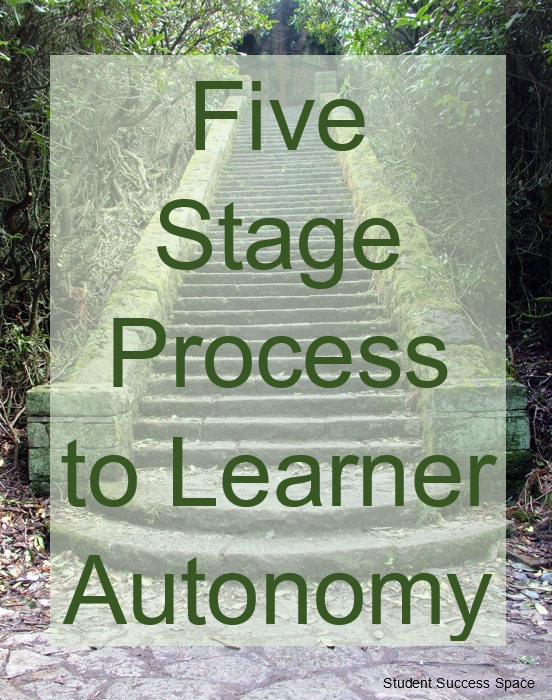
A five stage process to learner autonomy was first identified by Curran in 1976 but further expounded upon by Candy in his 1991 work, Self-Direction for the Lifelong Learner. This five stage process looks at the progression of the learner through the process of moving from a dependent learner to an independent learner.
Of course, it is essential to recall that when looking at autonomous learning, it has been identified that a learner may be autonomous in one situation while being completely dependent in another. Think of it this way, if you were an expert troubleshooting mechanical problems in foreign cars, you have already established a base in learning and knowing how to identify dilemmas. Even if you don’t have all the answers, you’ve already created a baseline that will guide you through the process in determining the best solutions and best options moving forward.
This same expert who procures information and will be able to find solutions to the most delicate and intricate of problems for a foreign car may not know how to address their financial problems. Or maybe they are slothful in caring for their home.
Autonomy can be directed in one area only.
This five step process to develop into an autonomous learner includes:
Total dependency
Attempting to move independently
Functioning independently and obtaining a command of the vernacular
Being open to correct
Obtaining a positive self-concept; or fully being an autonomous learner
Sources:
Candy, P. (1991). Self-Direction for Lifelong Learning. San Francisco, CA: Jossey-Bass.
Subscribe to our YouTube Channel by clicking here.
By Tracy Atkinson
Tracy Atkinson, mother of six, lives in the Southwest with her husband and spirited long-haired miniature dachshunds. She is a teacher, having taught elementary school to higher education, holding degrees in elementary education and an EDS in higher education. Her passion is researching, studying and investigating the attributes related to self-directed learners and learning styles. She has published several titles, including MBTI Learning Styles: A Practical Approach, The Art of Learning Journals, Calais: The Annals of the Hidden, Lemosa: The Annals of the Hidden, Book Two, Rachel’s 8 and Securing Your Tent. She is currently working on a non-fiction text exploring the attributes of self-directed learners: The Five Characteristics of Self-directed Learners.

Comments are closed